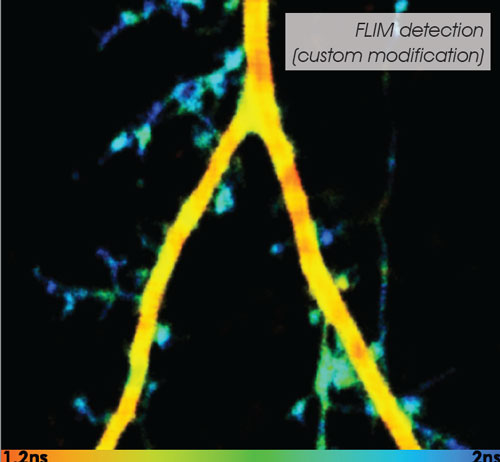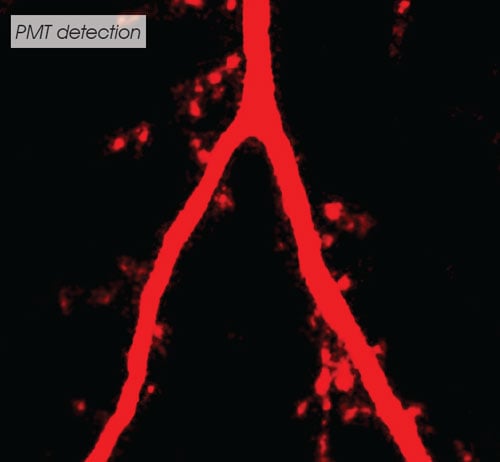
Two-photon FLIM - Dr Kim Dore (Professor Malinow Lab)
Dr Dore chose Scientifica's adaptable Multiphoton Imaging System to meet the distinctive demands of her research.
She uses two photon fluorescence lifetime imaging microscopy (FLIM) to monitor synaptic protein interactions within living neurons; exploring synaptic plasticity and amyloid-beta induced synaptic dysfunction.
University of California, San Diego (UCSD) at the Professor Robert Malinow Lab, Center for Neural Circuits and Behavior


Live two photon imaging of a 12 DIV cultured hippocampal neuron expressing Td-tomato and the membrane receptor EphB2 tagged with GFP at the N-terminus. The red channel is a cytoplasmic marker and shows the volume of the maged dendrite. The green channel shows both the lifetime of the quenched green fluorescent protein present in the Td-tomato dimer (short lifetimes) and of EphB2-GFP lighting up the regions with high surface ratio (high lifetimes).
Modified Design - For Unique Demands.
Dr Dore needed a cost-effective galvo-scanning two-photon microscope. She selected Scientifica's Slicescope equipped with the Multiphoton Imaging System as Kim stated it was "very competitive in terms of price and versatility." She was carrying out a variant of two-photon microscopy known as FLIM;
"The simple design improved the detection efficiency by positioning the detectors very close to the microscope objective. More importantly, the Scientifica staff agreed to modify the design of the multiphoton module to accommodate different detector needed for our FLIM experiments. The microscope is very efficient in terms of detection sensitivity. Also, the system can scan the samples pretty rapidly, which helps the reduction of phototoxicity and photobleaching."
She also took advantage of Scientifica's complete integration with the ScanImage open-source software solution. This is an excellent illustration of the diverse potential Scientifica's system offers studies utilising multiphoton imaging.

)